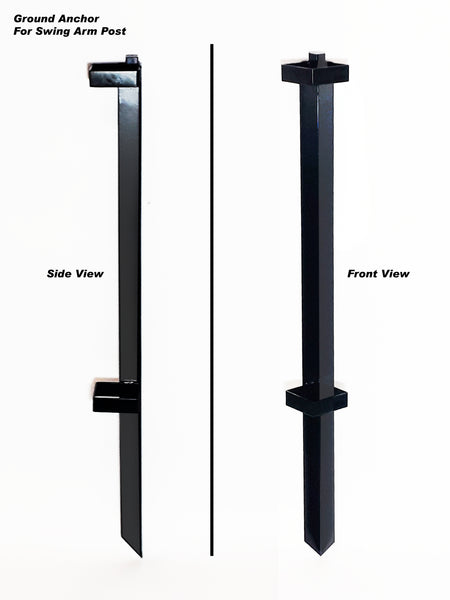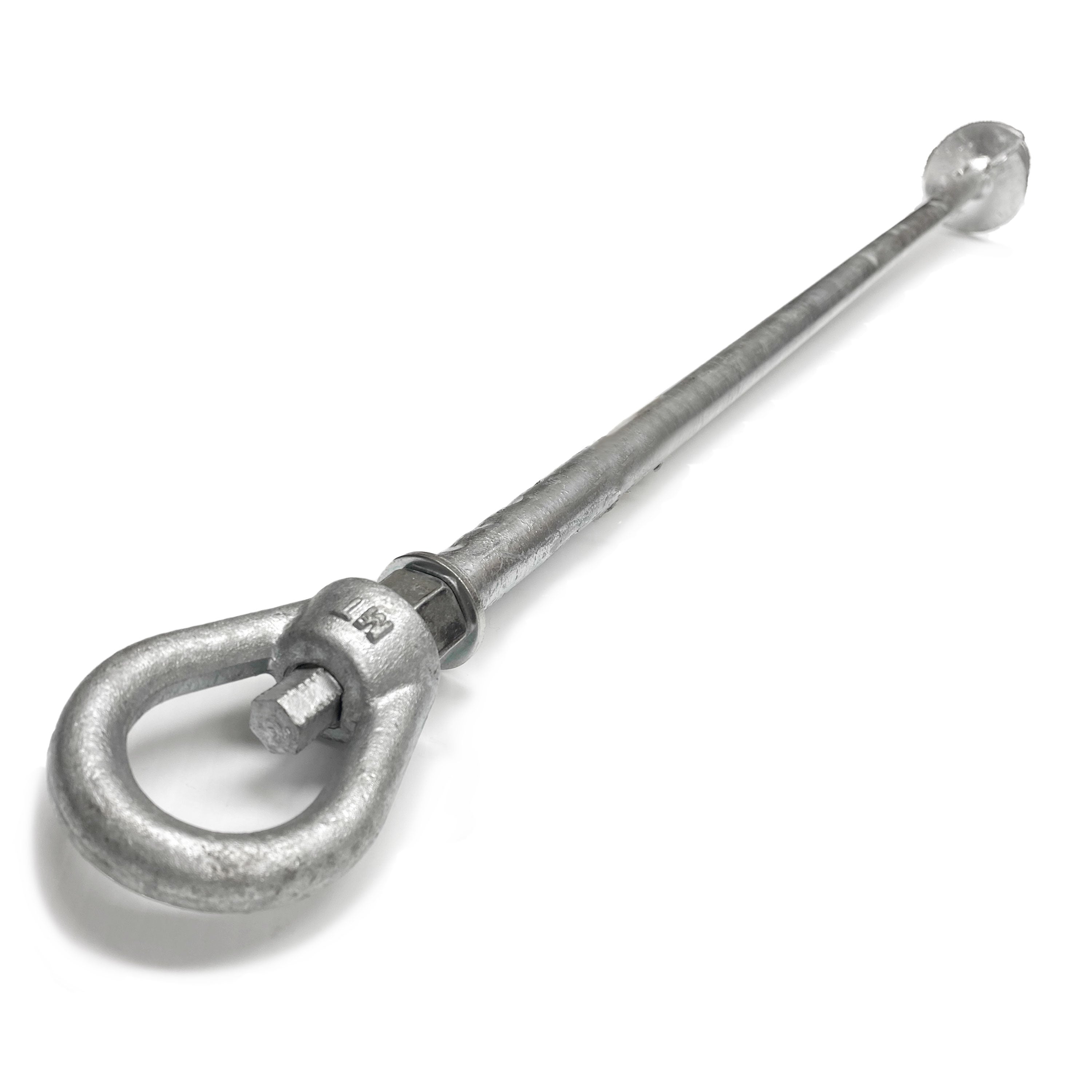An Expert’s Guide to Selecting the Most Reliable Ground Anchor Solution
An Expert’s Guide to Selecting the Most Reliable Ground Anchor Solution
Blog Article
Understand Why Ground Anchor Is Essential for Security and Durability
Ground anchors are a vital component in construction, giving important support and stability for various frameworks. Recognizing the different types and applications of ground supports can brighten their vital role in ensuring security and resilience.
Function of Ground Anchors in Building
Ground supports play a pivotal function in building by providing essential assistance and security to structures. These tools are made to transfer tons from a framework to the ground, making sure that structures and other frameworks stay secure under numerous problems. Ground anchors are particularly important in circumstances where soil conditions are unstable or where there is a threat of lateral motion, such as on inclines or near bodies of water.
The installation of ground anchors entails drilling right into the earth to reach secure dirt or bedrock, where the supports can be safely anchored. This process not only boosts the architectural honesty of a job but likewise mitigates the threats connected with soil disintegration and changing. Additionally, ground supports can be employed in temporary frameworks, such as building and construction sites, where they offer needed stabilization throughout the structure procedure.
Ground supports likewise contribute to the long life and toughness of structures by decreasing the possibility of negotiation and failing. Ground Anchor. By efficiently distributing and taking care of lots, these necessary parts are essential in keeping security criteria and guaranteeing the reliability of different construction jobs. In general, the value of ground anchors in building and construction can not be overemphasized, as they are important to effective design methods
Kinds of Ground Anchors


While countless kinds of ground anchors exist, each serves certain applications and problems within construction tasks. The most usual types include mechanical supports, grouted supports, and driven anchors.
Mechanical anchors, such as growth supports, use a mechanical activity to protect the support within the substratum - Ground Anchor. These are usually employed in lightweight applications, like safeguarding fixtures to masonry or concrete
Grouted anchors, on the other hand, involve drilling an opening, positioning a steel pole or wire, and after that filling the annular space with grout. This method is appropriate for high-load circumstances, supplying boosted security and resistance to dynamic forces commonly found in heavy construction.
Driven supports are generally set up by driving a steel rod or pipeline into the ground, making them appropriate for temporary applications such as protecting scaffolding or formwork. When no longer needed., they are fast to mount and can be eliminated quickly.
Other specific anchoring systems include helical anchors, which are screw-like gadgets used in various dirt problems, and deadman anchors, which count on the weight of a hidden object to provide security. Each type of ground support is designed to satisfy particular engineering requirements, guaranteeing safety and structural stability.
Advantages of Making Use Of Ground Anchors
The benefits of making use of ground anchors in building projects are substantial, improving both safety and structural performance. Ground anchors provide important resistance against side pressures, such as dirt movement, wind loads, and seismic activity. This resistance helps keep the stability of structures, avoiding prospective failures that could bring about dangerous situations or costly repair services.
Moreover, ground supports promote the reliable transfer of tons from frameworks to the bordering soil, making sure a balanced circulation of weight. This lots transfer decreases the danger of changing or working out, which can compromise the integrity of a building gradually. By using ground anchors, designers can also develop much more effective designs, as they permit for slimmer structural aspects while preserving safety criteria.
Furthermore, ground supports are versatile and adaptable to different dirt conditions and project demands. Their setup can commonly be finished promptly and with marginal disruption to the surrounding environment, making them a reliable choice for several building and construction applications. Ultimately, the use of ground supports improves not just the longevity of frameworks yet also contributes to a much safer working environment for building employees and future occupants.
Usual Applications and Uses
Countless construction tasks leverage ground anchors for their performance in boosting stability and safety. These functional parts are frequently used in different applications across the building and construction and civil engineering markets. One common application remains in preserving walls, where ground supports supply the needed assistance to protect against soil movement and keep architectural integrity.
In addition, ground supports are vital in securing short-lived frameworks, such as scaffolding and shoring systems, guaranteeing they remain stable throughout building and construction tasks. In the realm of foundation support, they are utilized to click for source reinforce existing frameworks, especially in areas susceptible to ground settlement or moving soil conditions.
Ground anchors also find considerable usage in slope stablizing tasks, where they help minimize landslide dangers by securing the soil to stable rock developments. One more considerable application is in the setup of wind generators, where they safeguard the base against lateral pressures produced by wind, ensuring functional safety and longevity.
Additionally, ground anchors are used in tunneling tasks to maintain the bordering ground during excavation. Their diverse applications underscore the vital duty ground anchors play in maintaining security and toughness in different building circumstances.
Setup Best Practices
Effective application of ground supports in various building jobs pivots on reliable setup practices. Correct installment is essential to ensure the anchors satisfy their designated function and maintain architectural stability gradually. Key ideal methods consist of complete website analysis, which entails reviewing soil conditions, lots requirements, and ecological factors that may affect support performance.
Before setup, it is important to choose the ideal kind of ground anchor based upon the details application and dirt characteristics. Using high-grade materials and sticking to supplier specs will improve the anchor's toughness and performance. During installment, guarantee that the anchor is positioned at the right angle and deepness, as these factors dramatically impact load-bearing capacity.
In addition, utilizing appropriate tools and strategies is essential, consisting of drilling or driving techniques tailored to the website conditions. After installation, conducting load screening can verify the anchor's efficiency and identify any type of possible issues important source early. Routine examinations are additionally suggested to check the problem of the anchors and bordering soil. By following these installation best specialists, engineers and techniques can boost the safety and longevity of frameworks reliant on ground anchors.

Verdict
In recap, ground supports are necessary parts in construction, considerably enhancing safety and toughness. Their ability to move lots efficiently minimizes dangers connected with unpredictable soil and side movements. The varied types and benefits of ground supports, coupled with their extensive applications, emphasize their relevance in both go temporary and long-term structures. Abiding by installment best methods guarantees optimum efficiency, thereby adding to the total stability and long life of building tasks.
The setup of ground anchors includes drilling into the earth to get to stable soil or bedrock, where the anchors can be safely secured.The benefits of using ground anchors in building and construction jobs are considerable, improving both safety and structural performance.Many construction tasks leverage ground supports for their efficiency in enhancing stability and safety.Effective application of ground supports in different construction jobs pivots on effective installment methods.In summary, ground supports are vital parts in construction, dramatically enhancing safety and security and durability.
Report this page